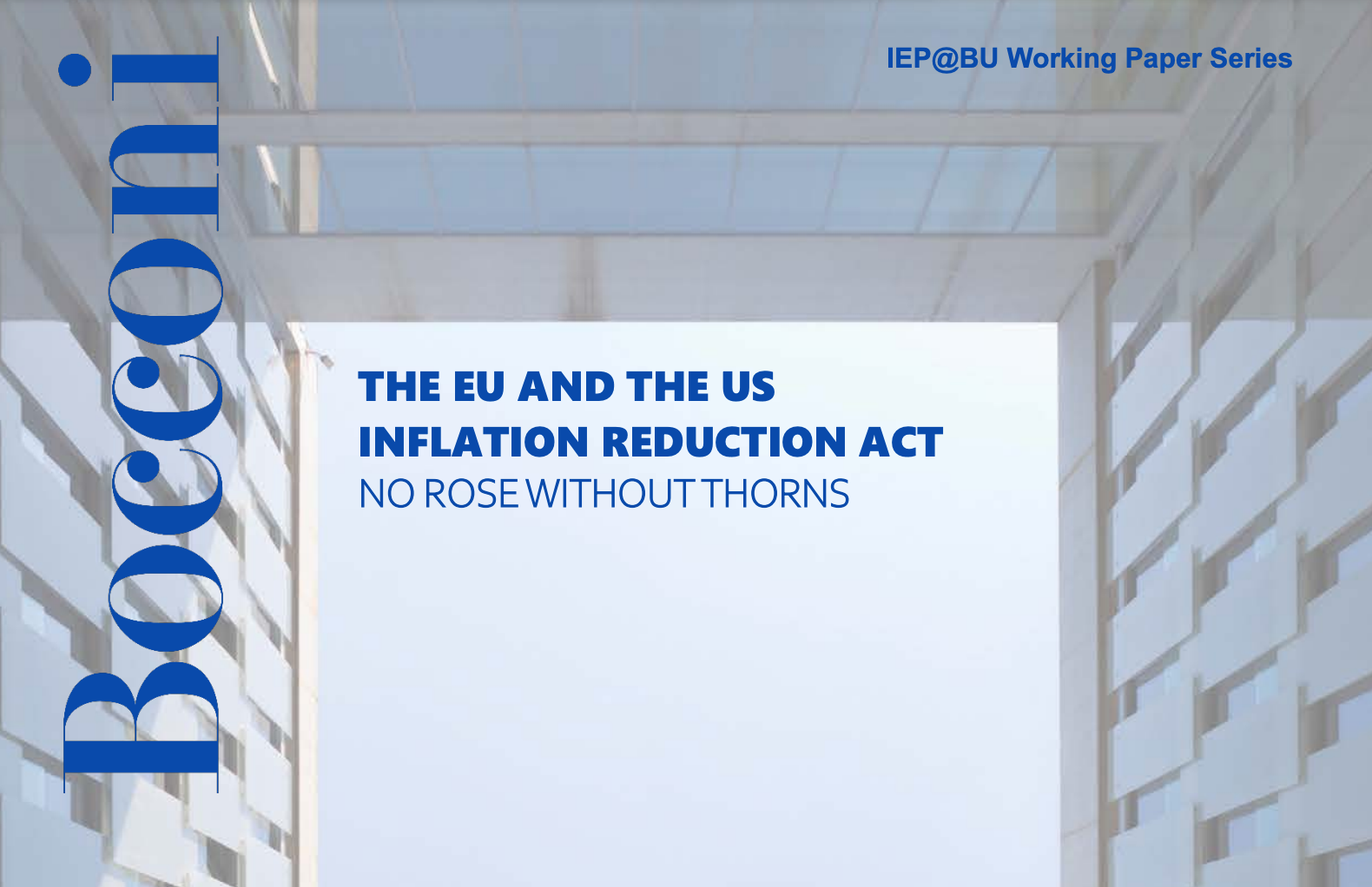The EU and the US Inflation Reduction Act, No Rose Without Thorns
In this Working Document, we do not try to provide an overall evaluation of the IRA or its cost-effectiveness with regard to addressing climate change and US emissions. Rather, we investigate its impact on the US market and on EU export opportunities, concentrating on the material content of the IRA – not its intention.

Executive Summary
The Inflation Reduction Act (IRA) is a vast and complex piece of legislation that has been both over- and under-rated. Its fiscal cost and domestic impacts are likely to be larger than anticipated.
But its impact on the EU is very likely to be small and, on balance, positive – thus not validating the supposed need for a European response.
Overall, the opportunities outweigh the disadvantages for European industry since the increase in the potential market for European producers far outweighs the relative handicap created by the local content rules of the IRA, which is small (at most 10-20%) and which can be avoided in the cases of electrical vehicles through leasing.
The only exception is battery production for which the IRA provides heavy, but temporary protection. However, this is a large-volume, low-margin sector which has already received large subsidies in the EU under the so-called European Battery Alliance. Moreover, experience has shown that battery production ends up being close to automobile factories to save on transport costs. There is little danger that a flood of US-made batteries will invade the EU market.
The widely reported budgeted expenditure for the IRA from the Congressional Budget Office (CBO) is cumulatively about $380 billion up to 2032. Our calculations suggest that the overall fiscal cost of the IRA could be much higher, probably over $1,000 billion.
The 10-year total conceals a steep time profile. For the next few years, US fiscal support for renewables will remain low and much below the EU effort for a long time. In terms of green expenditure, the US has years of catching up ahead. However, it will be doing so at a high speed, and has already leapfrogged the EU in terms of an effective carbon price for industry.
At expenditure rates EU support for renewables is likely to amount to much more than the budgeted expenditure of the IRA over the next decade. But most of this will be legacy costs from very high feed-in tariffs promised in the early 2010s.
IEP@BU does not express opinions of its own. The opinions expressed in this publication are those of the authors. Any errors or omissions are the responsibility of the authors.


